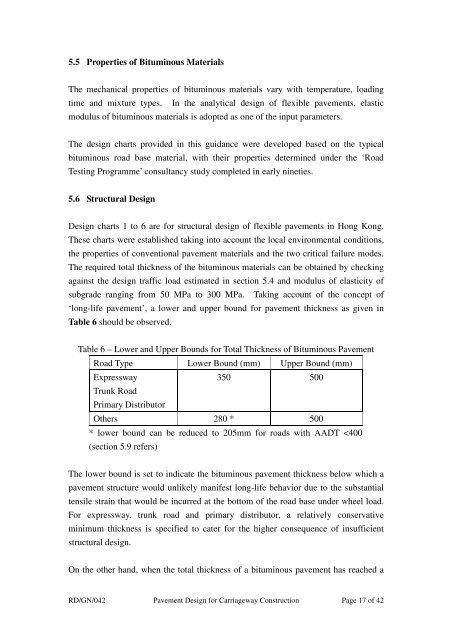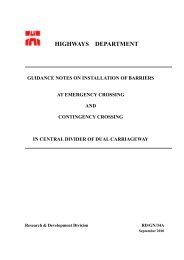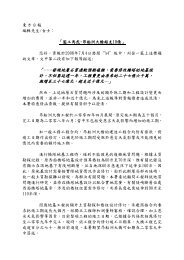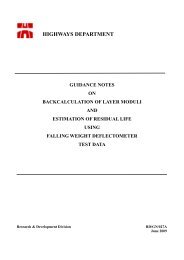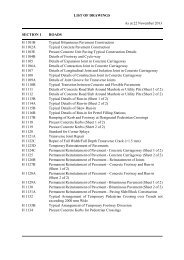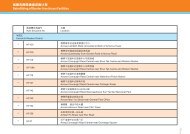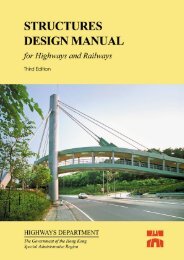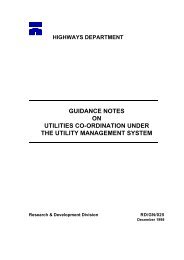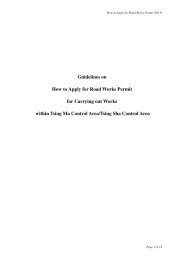Pavement Design for Carriageway Construction
Pavement Design for Carriageway Construction
Pavement Design for Carriageway Construction
You also want an ePaper? Increase the reach of your titles
YUMPU automatically turns print PDFs into web optimized ePapers that Google loves.
5.5 Properties of Bituminous MaterialsThe mechanical properties of bituminous materials vary with temperature, loadingtime and mixture types. In the analytical design of flexible pavements, elasticmodulus of bituminous materials is adopted as one of the input parameters.The design charts provided in this guidance were developed based on the typicalbituminous road base material, with their properties determined under the ‘RoadTesting Programme’ consultancy study completed in early nineties.5.6 Structural <strong>Design</strong><strong>Design</strong> charts 1 to 6 are <strong>for</strong> structural design of flexible pavements in Hong Kong.These charts were established taking into account the local environmental conditions,the properties of conventional pavement materials and the two critical failure modes.The required total thickness of the bituminous materials can be obtained by checkingagainst the design traffic load estimated in section 5.4 and modulus of elasticity ofsubgrade ranging from 50 MPa to 300 MPa. Taking account of the concept of‘long-life pavement’, a lower and upper bound <strong>for</strong> pavement thickness as given inTable 6 should be observed.Table 6 – Lower and Upper Bounds <strong>for</strong> Total Thickness of Bituminous <strong>Pavement</strong>Road Type Lower Bound (mm) Upper Bound (mm)Expressway350 500Trunk RoadPrimary DistributorOthers 280 * 500* lower bound can be reduced to 205mm <strong>for</strong> roads with AADT


